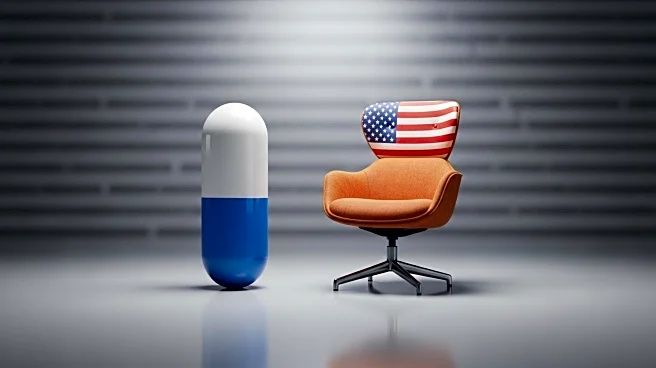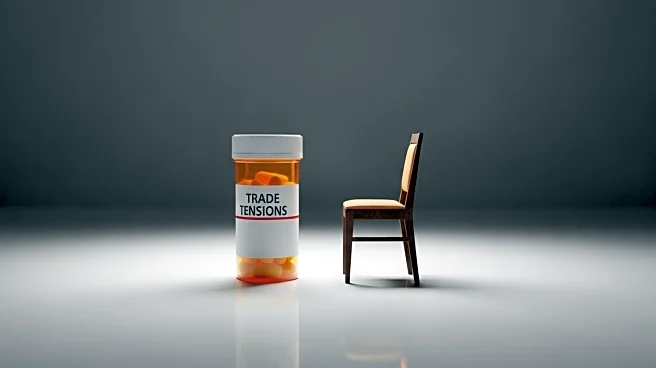What is the story about?
What's Happening?
President Trump has introduced new tariffs on a range of imported goods, including a 100% tariff on pharmaceutical drugs and a 50% tariff on kitchen cabinets and bathroom vanities. These tariffs, effective October 1, 2025, are expected to increase costs for American consumers, particularly in home renovation and healthcare sectors. The tariffs are part of ongoing trade negotiations and could be adjusted or revoked depending on diplomatic outcomes. The furniture and pharmaceutical industries are particularly concerned about the potential for increased prices and supply chain disruptions.
Why It's Important?
The tariffs could lead to higher consumer prices, affecting affordability in key areas such as healthcare and home improvement. Pharmaceutical companies warn that the tariffs could divert funds from manufacturing and research, potentially leading to drug shortages. The furniture industry, heavily reliant on imports, may see reduced consumer demand due to higher prices. These economic pressures come at a time when the Federal Reserve is adjusting interest rates to manage inflation and growth, adding complexity to economic policy decisions.
What's Next?
The potential for tariff adjustments remains, as stakeholders in affected industries may push for changes to mitigate economic impacts. Businesses might increase imports before the tariffs take effect to avoid higher costs, while consumers could delay purchases. The Federal Reserve will need to consider these developments in its monetary policy, particularly as it addresses inflationary pressures. The outcome of trade negotiations could influence the longevity and scope of these tariffs.
AI Generated Content
Do you find this article useful?













